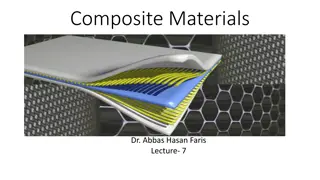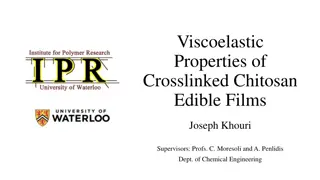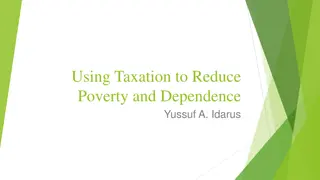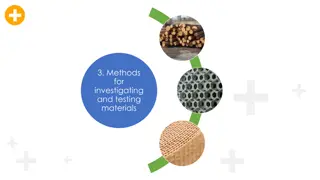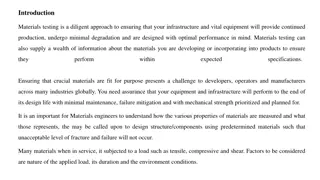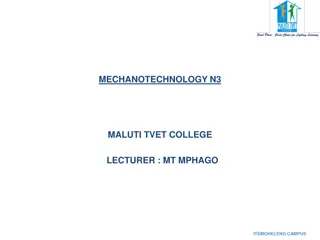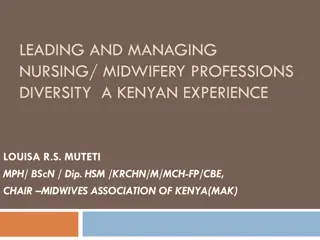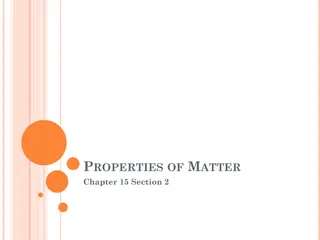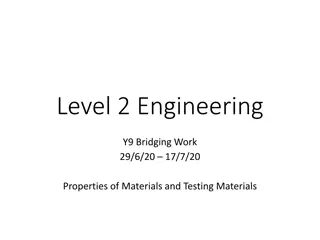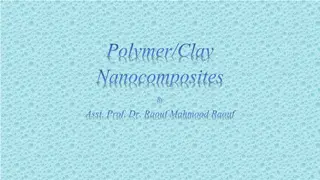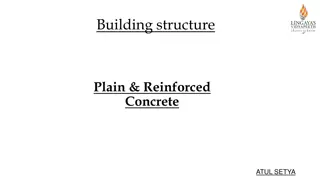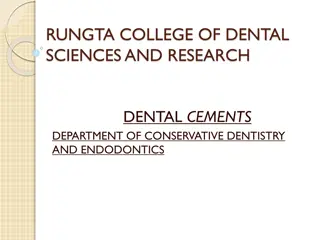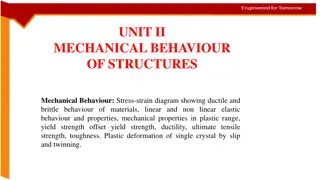Investigating Tensile Properties of Kenyan Boran Cowhide
This research focuses on the tensile properties of indigenous Kenyan Boran cowhide and the effects of sampling and chrome-tanning. The study aims to contribute to improving the quality of Kenyan leather, addressing its economic impact and potential in the global market.
Download Presentation

Please find below an Image/Link to download the presentation.
The content on the website is provided AS IS for your information and personal use only. It may not be sold, licensed, or shared on other websites without obtaining consent from the author.If you encounter any issues during the download, it is possible that the publisher has removed the file from their server.
You are allowed to download the files provided on this website for personal or commercial use, subject to the condition that they are used lawfully. All files are the property of their respective owners.
The content on the website is provided AS IS for your information and personal use only. It may not be sold, licensed, or shared on other websites without obtaining consent from the author.
E N D
Presentation Transcript
KABARAK UNIVERSITY 6THANNUAL INTERNATIONAL RESEARCH CONFERENCE Tensile Properties of Indigenous Kenyan Boran Pickled and Tanned Bovine Hide KALLEN M. NALYANYA, RONALD K. ROP, ARTHUR ONYUKA
Introduction / Background Boran cattle are predominant breeds in NE, a region that produces 70% livestock for meat Dark pigmentation; black points-protection from sunburns; smooth, loose but motile and shiny coat/skin-reflection solar radiation; reasonable large body, thick skin and well-marbled beef with even fat cover make this breed a promising source of beef and bovine hide for the production of quality leather. Leather by-products can raise more revenue compared to beef itself (FAO, 2007). Despite the large potential in this area, the economic impact is not yet felt. This has been attributed to poor quality of Kenyan leather on the world market Alongside animal breed & age, chemical modifications of processing also affects the quality 6th Annual International Research Conference 14/11/2024
Statement of the problem The realization of the famous Kenya Vision 2030 is pegged on the possibility of unlocking the country s untapped potential. Leather industry is one of these untapped potential areas, whose contribution to the global economy is reasonable. This includes employment opportunities, contribution to the National GDP from the foreign exchange and source of livelihoods for pastoralist farmers. However, the contribution is far below the expected take off rate due to low quality of the leather. The leather quality has been associated with the numerous do and undo series of chemical processes involved in the leather processing. The subjected processes alter the mechanical and structural collagen matrix of the resulting leather and hence final quality. This study reports an investigation on the effect of two chemical processes involved in leather making: pickling and chrome- tanning. 6th Annual International Research Conference 14/11/2024
Study objectives 1. Determining Kenyan indigenous Boran cowhide 2. Effect of sampling on tensile properties 3. Effect of chrome-tanning on tensile properties tensile properties of 6th Annual International Research Conference 14/11/2024
Brief literature review Quality indicators include tensile properties. Tensile strength determines the structural resistance of leather to tensile forces hence its state and usability. It also informs the entire process of manufacturing goods from leather as consumers can determine both the routine quality and serviceability assessment of the material. Percentage Elongation determines the elasticity of the material especially upper leather and footwear upper should possess high flexibility to prevent the appearance of cracks and tears in the ball area. High elasticity allows the material to withstand the elongation stresses to which it is subjected during footwear lasting, especially on the toe area 6th Annual International Research Conference 14/11/2024
Methodology Freshly underwent conventional tanning procedure pickling stage cutting into two halves flayed hide Samples were conditioned in standard atmosphere of 23/50 (ISO 2418/19: 2002) for at least 48 hours to before 6th Annual International Research Conference 14/11/2024
Methodology Each sample was clamped at the cross-sectional area of the gauge in the grips. A uniform jaws separation speed of 100mm/min was selected with a GL=100mm. Machine was run until specimen was torn apart & highest breaking load (force) reached during tearing was recorded N. Elongation(mm) was recorded directly from scale. Few samples were disposed due to slip-faulty during testing. Absolute result was obtained only from the successful sample until maximum loading applied. For tear strength pneumatic grips were replaced in the jaws of Instron testing machine & highest force recorded. measurements, 6th Annual International Research Conference 14/11/2024
Findings / Results and Discussion 1. Effect of sampling direction A fact exploited in shoe-making, leather stretched perpend. anisotropic arrangement of the collagen fibres. Degree of alignment of collagen fibrils in the plane determines tear strength. Majority of their fibrils contained within parallel planes with little or no crossover between the top and bottom surfaces When aligned in a direction normal to the stresses applied, strength is low more fibres tensile
Findings / Results and Discussion 2. Effect of chrome-tanning on tensile properties Pickling swelling) collagens decreasing load bearing fibres per unit area (osmotic loosens Tanning introduces crosslinks that binds the active groups together hence resisting slippage. Increases tensile strength Swelling pushes collagen fibres apart increasing angle of weave decreasing load transfer 6th Annual International Research Conference 14/11/2024
Conclusions Tanning increases tensile strength but significantly reduces both percentage elongation (elasticity) and tear strength of bovine hide. Perpendicularly sampled leather have significantly higher percentage elongation and tear strength. However, tensile strength for samples cut perpendicularly is significantly lower than for samples cut parallel to the backline. This is due to geometry and alignment of samples during measurement The measured values of tear strength, tensile strength and percentage elongation have shown that indigenous Kenyan Boran bovine hide are of relatively good quality based on the minimum quality standards by UNIDO and British Standards. 6th Annual International Research Conference 14/11/2024
Recommendations 1. Use of Chrome-tanning with careful monitoring on environment 2. Rearing of this breed to enhance a sustainable income for the pastoralist communities 3. More researches are needed to help overcome other factors 6th Annual International Research Conference 14/11/2024
Areas for further study 1. Impact of other processing steps on the quality of the hide alongside tanning 2. Effect of management practices carried out on cattle on the quality of the resulting hide 6th Annual International Research Conference 14/11/2024
References M. Tuckermann, M. Mertig and W. Pomp, Stress measurement on Chrome-tanned leather, Journal of materials science. 36, pp.1789-1799, 2001. E. J. Sturrock, C. Boote, G. E. Attenburrow and K. M. Meek, The effects of the biaxial stretching of leather on fibre orientation and tensile modulus, Journal of Materials Science,39, pp. 2481 2486, 2004. C. Liu, N. P. Latona, M. M. Taylor and R. J. Latona, Effects of Dehydration Methods on the Characteristics of Fibrous Networks from Untanned Hides . 2006 UNPUBLISHED J. Y. Xing, B. Bai and Z. H. Chen, Effects of UV irradiation on stabilization of collagen, IEEE, 4, pp. 2979-2982, 2011. C. H. Lee, A. Singla and Y. Lee, Biomedical applications of collagen, International Pharmacy, 221, pp.1-22, 2001. A. Annumary, P. Thanikaivelan, M. Ashokkumar, R. Kumar, P. K. Sehgal and B. Chandrasekaran Synthesis and characterization of hybrid biodegradable films from Bovine hide collagen and cellulose derivatives for biomedical applications, Soft Materials, 11, pp. 181-194, 2013. 1. 2. 3. 4. 5. 6. 6th Annual International Research Conference 14/11/2024


